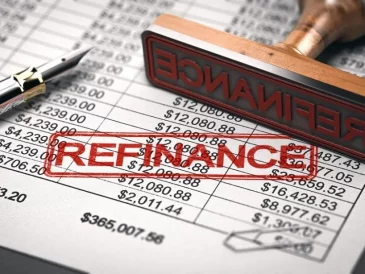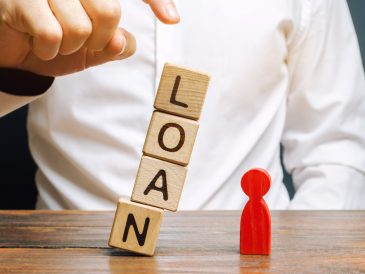Ever wish you could change the look of your bathroom, get a new car, or get out of debt? That means you might need a 300,000 kr loan. This article will tell you everything you need to know to apply for and get a 300,000 kr loan, which will help you reach your financial goals.
It’s easy to get things when you have a big loan. With 300,000 kr, you can do many things, such as fix up your house, buy a good car, or organize your money. You could build the bathroom of your dreams, buy a brand-new car, or settle all your bills with that much cash. With the right cash, you can do all of those things.
We will show you how to apply for a loan step by step after this lesson and give you tips along the way. Of course, we can help you understand what you need to do. We can also help you find the best prices and terms. You are about to take the first step toward your financial goals. You will need to ask for a 300,000 kr loan. It only takes a few clicks to get to your dreams.
Comprehending 300,000 Kr Loans and Their Applications
In Norway, a loan of 300,000 kr could be used for a lot of different things. Here are some examples of uses that happen often:
Adding value to your home: Buy new furniture or fix up old ones to make your home more valuable.
- Debt Consolidation: Getting a loan to pay off several bills can lower your interest rates and make your budget easier.
- School costs: Pay for your own or your kids’ school fees, books, and any other costs that come with going to school.
- Small Business Start-up: Use the money to start your own business or pay for plans to grow, buy tools, or hire staff.
- Emergency Expenses: Pay for unexpected hospital bills, car repairs, or other important needs.
Different 300,000 Kr Loan Types
There are several ways to get a loan for 300,000 Kr, such as:
Secured loans, also called “sikrede lån,” need collateral, like a house or a car. The collateral lowers the lender’s risk and may even lead to a lower interest rate because it is used as protection.
When you get an unsecured loan, you don’t have to put up any collateral. Because the lender is taking on more risk, the interest rate may be higher. This depends on creditworthiness.
Considerations for Selecting a Loan
The following elements must be taken into account while comparing loans:
- Interest Rate (rente): The interest rate applied to the loan. Reduced total repayment is the result of a decreased interest rate.
- Loan Repayment Term (nedbetalingstid): The amount of time you have to pay back the loan. Although longer terms may result in higher interest charges, they can also cut monthly payments.
- Fees (gebyrer): Extra costs related to the loan, like early repayment penalties or application fees. When figuring out the overall cost of borrowing, take these costs into account.
When applying for a 300,000 kr loan in Norway, people can make well-informed decisions if they are aware of the applications, kinds, and considerations.
Being Eligible for a Loan of 300,000 Kr
In order to qualify for a 300,000 kr loan in Norway, borrowers must meet certain eligibility criteria. These criteria include income, credit score, and employment status.
Firstly, borrowers must have a stable and sufficient income to demonstrate their ability to repay the loan. The specific income threshold may vary among lenders, but generally, it should be enough to cover the loan payments along with other financial obligations.
Secondly, a good credit score is essential for loan approval. Lenders in Norway typically consider creditworthiness when assessing loan applications. A higher credit score indicates a lower credit risk and improves the chances of loan approval. Therefore, borrowers should strive to maintain a solid credit history by making payments on time and minimizing debt.
Lastly, borrowers’ employment status is important for loan approval. Lenders prefer borrowers with a stable job or a regular source of income. This ensures that borrowers have a consistent flow of funds to meet their loan obligations.
When applying for a loan in Norway, borrowers will typically be required to provide certain documents. These may include pay stubs (lønnslipper) to verify income, recent tax returns to assess financial stability, and bank statements to confirm savings and transaction history.
To enhance the likelihood of loan approval, borrowers can take certain steps. Improving their credit score by responsibly managing their debts, paying bills on time, and reducing outstanding balances can significantly increase their chances of approval. Additionally, having a co-signer with a strong credit history can act as a guarantor and enhance the borrower’s eligibility.
By understanding and meeting the borrower requirements, providing the necessary documentation, and following these tips, borrowers can greatly bolster their chances of qualifying for a 300,000 kr loan in Norway.
Choosing the Best Lender for Your Needs
In Norway, it is crucial to take into account the many lenders that offer loans for 300,000 kr. This covers online lenders, credit unions, and conventional banks. Every choice has benefits and drawbacks of its own. Conventional banks may provide competitive interest rates, but they frequently have stringent lending requirements. Credit unions are membership-based institutions that may have fewer lending possibilities but generally provide more individualised service. Online lenders could have higher loan rates, but they also provide convenience and speedy approval processes. Borrowers can select the lender that best meets their needs by looking through all of these possibilities.
It’s crucial to compare loan offers to make sure you’re getting the best value. Three key considerations should be made when comparing loan offers: terms (vilkår), fees (gebyrer), and interest rates (rente). The cost of borrowing is the interest rate, which varies greatly throughout lenders. Monthly payments are reduced at lower rates. Application costs, origination fees, and early repayment fees are a few examples of fees. These costs can have a substantial impact on the total cost of the loan, therefore it’s important to comprehend and compare them. Lastly, thoroughly review and contrast the terms of every loan. This covers the length of the repayment plan, flexibility, and any other terms or specifications.
Before signing any documents, be sure you have read and comprehended the terms and conditions of the loan completely. It’s imperative to make sure that every phrase is understandable and appropriate for your financial circumstances. Be mindful of the repayment schedule, changes in interest rates, late fees, and any penalties associated with early repayment. Never be afraid to ask the lender for clarification if something seems ambiguous or unfavourable. You’ll be able to make an informed choice and steer clear of any expensive surprises later on if you take the time to thoroughly understand the loan terms.
Appropriate Guidelines for Borrowing
Effective personal financial management requires responsible borrowing behaviours. Borrowing no more than you can afford to pay back is crucial if you want to make sure you are making wise loan decisions. This entails figuring out your repayment capacity and budget before approving the loan amount.
Give readers tools or resources to help them estimate the amount they can comfortably pay back each month so they may help them calculate manageable monthly installments. These resources can be budgeting apps or loan calculators that account for their income, expenses, and current debts.
Encourage readers to make a budget that includes their loan installments as well. They can successfully manage their money this way, making sure they don’t overspend or incur debt. Give readers information or examples of budgeting that deal especially with loan repayments so they may learn how to divide their income and make a realistic spending plan.
Additionally, provide tips on how to pay off loans more quickly, focusing on Norwegian borrowers with loans totaling 300,000 kr. These tactics can be increasing monthly payments when it’s feasible, switching to biweekly payments from monthly ones, or looking into refinancing possibilities to get a better interest rate. Borrowers can reduce interest costs and accelerate loan payback by putting these suggestions into practice.

Conclusion
To sum up, a loan of 300,000 kr might be a great instrument for people who want to better their financial circumstances and reach their financial objectives. This kind of financing has many significant advantages. First of all, a 300,000 kr loan enables people to follow their goals, be they founding a business, buying a house, or funding higher education. This loan gives you the extra cash you need to make your dreams come true.
Moreover, a loan of 300,000 kr is a workable way to combine debt. It can be used to settle credit card debt or high-interest loans, possibly saving borrowers a sizable sum of money on interest. In addition, combining several loans into one streamlines the payback procedure and improves financial management.
Considering all of the benefits associated with a loan for 300,000 kr, you should act quickly. I strongly advise readers to go to https://finanza.no/lan-300000/ to learn more about the terms and circumstances of this loan. This website walks users through the loan application procedure and offers extensive information. Don’t pass up the chance to better your financial situation and realise your aspirations. Now is the time to take the required action and visit the website for further details.





